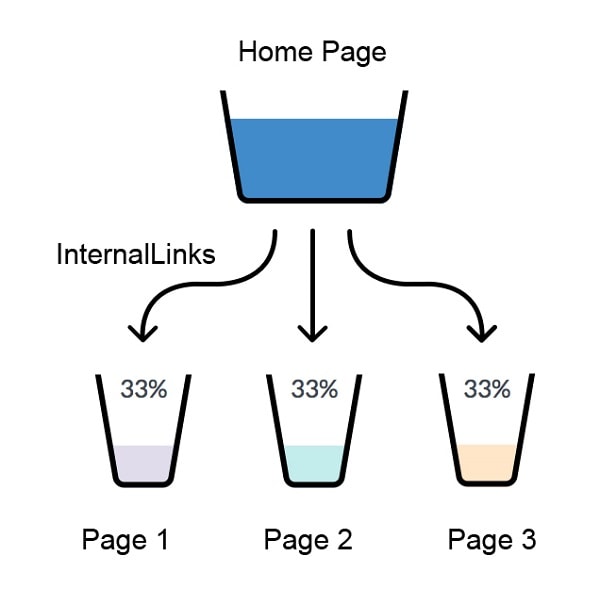Internal linking is an important part of any SEO strategy. Internal links come in many forms (from navigation buttons to footer links) and they act as way to:
- Connect pages across your site
- Flow and circulate link equity throughout your site
- Establish semantic relevancy (through keyword anchor text)
- Bring pages higher up in the information architecture (i.e. fewer clicks from the home page)
- Keep users on your site longer (more pages per visit)
- Send signals to Google about which pages on your site are your most important pages
Google and other search engines treat links as “votes.” So essentially, one site linking to another site is a vote of confidence for that site. It’s an endorsement and it conveys trust, authority and relevancy from one site to another. Google is a link-based algorithm, so the more quality links your site has, the better it will perform.
This same treatment applies to internal linking as well, where a site links to its own pages of content. For example, navigation buttons are internal links; hyperlinks in your site-wide footer are internal links; and so are inline, contextual links within a pages body copy that point to other pages on the same site.
So having an internal linking strategy is important as a way to improve overall visibility for your website in the search results, which leads to higher rankings and more organic traffic.
One popular and effective internal linking strategy is to use inline anchor text links (hyperlinked keywords within your body copy).
Let’s look at one way to practice this on a regular basis.
Monthly Internal Link Building Project
Objective: Every month get a list of all the pages that have gone live on your website and add three links to the page from three different pages on the same site. This is something you can do yourself, hand off to someone in your marketing department or even hire an experienced digital marketer from Inbound.org or Upwork.com
Link Anchors:
You’ll want to diversify your approach and use three different variations of your target keyword as link anchor text. The reason to diversify link anchors is it looks more natural and it allows you to target and rank better for a broader array of keywords.
We’ll use this post on the “best outdoor security cameras” as the example https://watchdogreviews.com/best-outdoor-security-cameras/
Here are the different keyword variations to use:
- Variation #1: For the example post, let’s use the main keyword topic “outdoor security camera(s).” It’s always important to use the primary keyword the article is targeting as one variation, which is typically found in the file name or page title. The link anchor can be plural or singular, whichever is easiest to link to naturally within the text.
- Variation #2: Will be main product keyword + a modifier. For this post, we’ll use the modifier “best” so keyword anchor link variation #2 will be “best outdoor security camera(s).”
- Variation #3: Here, let’s use a generic phrase like “this article” or “this list” or “click here” or any range of very general phrases that you like or think fits best given the context of the article/sentence you’re linking within.
How to Find Internal Link Opportunities
To find internal link opportunities, you’re going to use a Google search operator + the main keyword, like this: site:watchdogreviews.com outdoor security camera
That operator will return Google search results from Watchdogreviews.com that are the most relevant to the keyword query. You may have to play around with different variations, like outdoor security cameras (plural) or use quotations “outdoor security camera” for this post in order to find linkable text opportunities.
Using this approach and the search operator above, I found this result with the exact match phrase:
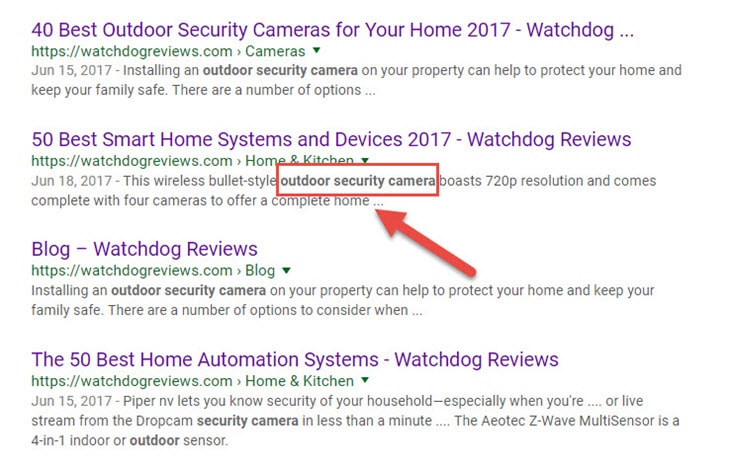
Next steps you’ll:
- Click through to that page in the search listings: https://watchdogreviews.com/best-smart-home-systems/
- Use control +F to find the instance of the keyword you want to link in the article
- Hyperlink the keyword anchor text to the target page, hit update and confirm the link is live, like this:
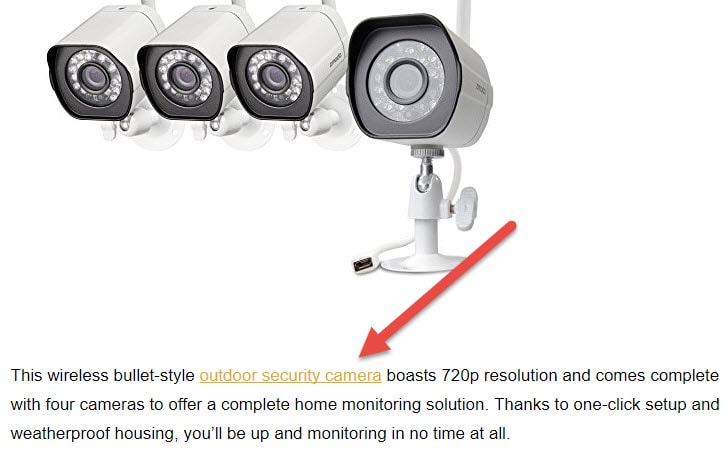
Keep in mind:
- You’ll always get the page you’re trying to build internal links to as one of the most relevant result. Always skip that result. Don’t add self-referential internal links, i.e. a link to a page within the same page. It’s useless.
- If you have a new website, phrase match linking opportunities may be scarce. However, as your site grows and you publish more content, there will be more opportunities. But in the meantime, you can find opportunities by being a little creative….
Getting Creative with Internal Linking
If you’re stumped for opportunities to build three internal links to a particular page for whatever reason (the topic isn’t mentioned anywhere else on the site or you haven’t really published much relevant content yet), you’ll need to think outside the box.
For example, there aren’t really any other phrase match keywords in the rest of the results on our example site for “outdoor security camera.” However, there is a partial match that you can try to make work.
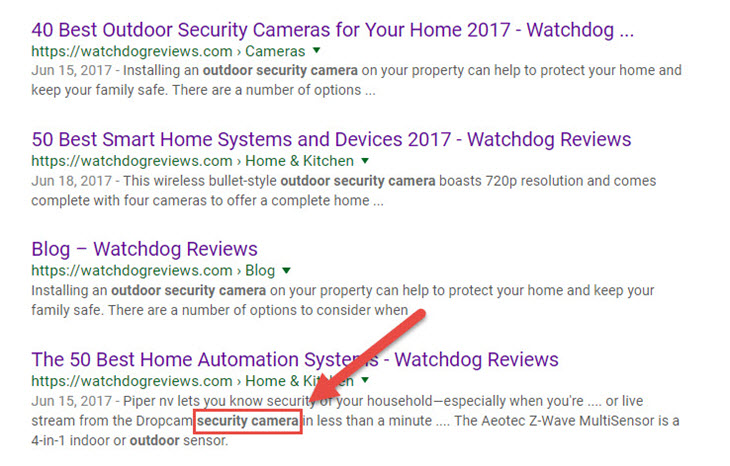
If you click through to that page (https://watchdogreviews.com/best-home-automation-systems/), you see one of the products on the list is a Dropcam security camera.
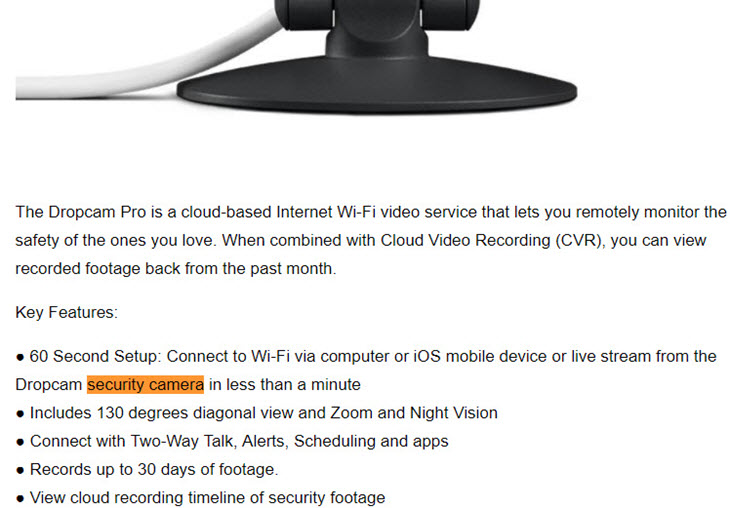
You could try to rework the text to the anchor text “best outdoor security camera” for variation #2, but that might feel awkward, forced and technically incorrect because it’s an indoor security camera not an outdoor camera.
But you can take some poetic license, get creative and include a quick note about our breakdown of the best outdoor security cameras article that a reader might find relevant, useful, like this:
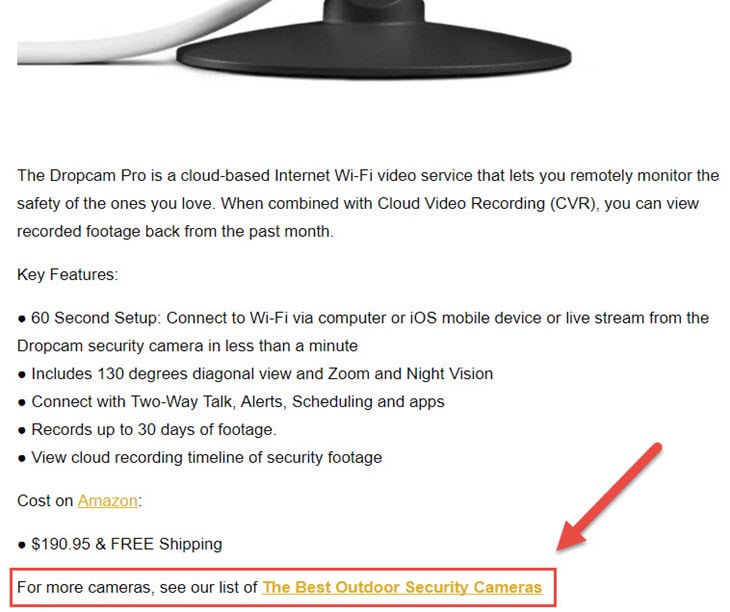
For the third keyword anchor text variation, there really weren’t any other good opportunities. So here we got more creative and used a very generic but relevant term in the search operator: site:watchdogreviews.com security and found this result.
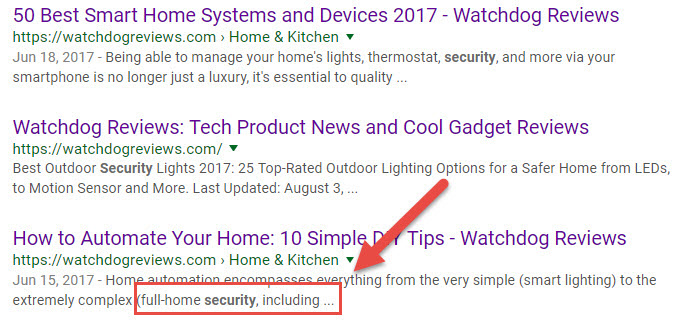
Clicking through to the page (https://watchdogreviews.com/how-to-automate-your-home/), we reworked the text around “full-home security” with a generic anchor text link to the target outdoor security camera page.
So this:

Became this:

This isn’t as generic as “click here” or “this article” but it’s close enough given what we have to work with. Plus, it’s a judgement call, so just use your best judgement as to what will work as you’re doing this.
Final Thoughts & Common FAQs on Internal Linking
How do internal links impact site architecture and user navigation?
While internal links themselves do not significantly affect page loading times, the overall structure and complexity of the website can. It’s important to ensure that the website’s architecture is optimized for performance, and that includes efficient navigation and linking structures.
What is the ideal number of internal links per page?
Overloading a page with too many links can appear spammy to both users and search engines, potentially harming the site’s ranking. The key is to incorporate internal links in a way that feels natural and provides value to the reader, focusing more on the quality and relevance of links rather than just the quantity.
How can internal linking be effectively managed on large websites with thousands of pages?
For large websites, then it is important to remember that not every page on a website holds the same value in terms of SEO or user interest. Prioritizing internal links to high-value pages, such as those that align closely with business goals or those that are already performing well in search results, can amplify the impact of internal linking. It’s about strategically directing users and search engine crawlers to the most important pages of your site.
Overall, the key is the added text link should feel relevant, natural and not too forced or awkward, which is what you’re striving for as much as possible. Finally, you want to try and balance the readability of the content with including a relevant anchor link.


